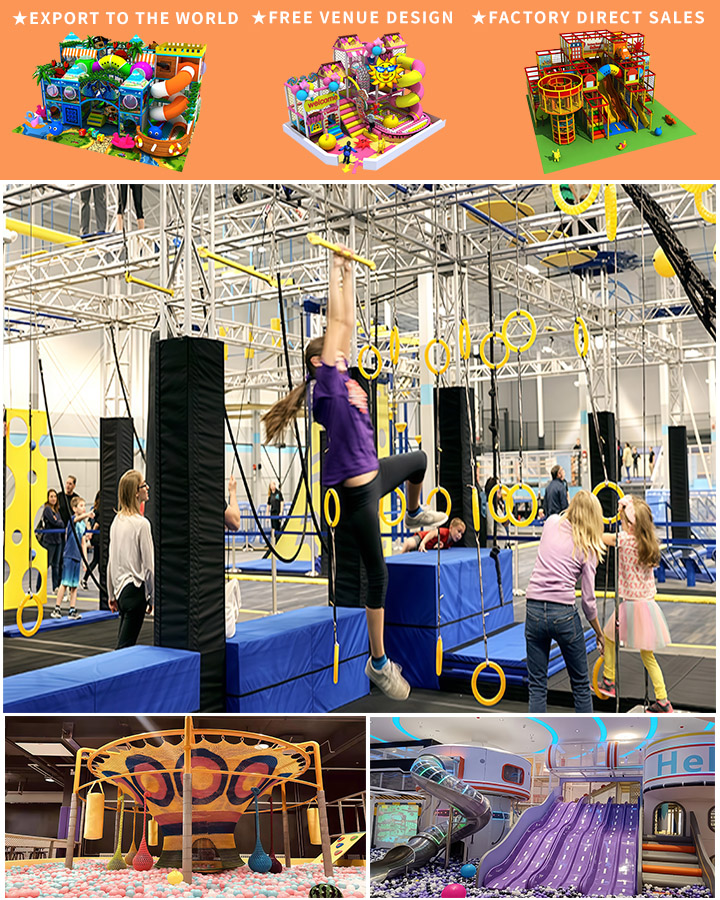Creating a vibrant and engaging environment for children is essential in both amusement parks and educational settings. One of the most impactful ways to achieve this is through custom indoor playground equipment, especially when it’s designed with softplay, wooden elements, and educational aspects in mind. Let’s explore the multifaceted benefits of these custom creations and their significant role in fostering a joyful and enriching experience for young ones.
The Appeal of Softplay Equipment
Softplay equipment is a cornerstone of modern indoor playgrounds, offering a safe and cushioned environment where children can play and explore without the risk of serious injury. Softplay structures are typically made from high-quality foam or other pliable materials that provide ample padding, making them perfect for energetic activities like jumping, climbing, and sliding. The tactile nature of softplay equipment also encourages sensory exploration, which is crucial for cognitive development.
Safety and Comfort First
One of the primary concerns for parents and educators is the safety of the children under their care. Softplay equipment addresses these concerns by minimizing the risk of injuries during play. The cushioned surfaces and rounded edges ensure that even the most enthusiastic of children can have fun without getting hurt. This sense of security allows both kids and adults to relax and enjoy the playtime experience fully.
Integrating Educational Elements

While safety and fun are paramount, an equally important aspect of indoor playgrounds is their potential for education. Custom indoor playground equipment can be designed to incorporate educational elements that make learning an integral part of play. For instance, incorporating wooden elements can serve multiple purposes. Wood is a natural material that is not only aesthetically pleasing but also durable and long-lasting. Additionally, working with wood can introduce children to basic concepts in physics and engineering as they learn about balance, gravity, and structural integrity.
Learning Through Play
Incorporating educational themes into the design of the playground can further enhance its value. Interactive panels featuring letters, numbers, and shapes can transform a simple play area into a dynamic learning environment. Climbing walls with puzzle pieces or slides that double as chalkboards can make learning an adventure. Such integrations encourage kids to engage in activities that promote problem-solving, critical thinking, and creativity, all while having fun.
The Role of Wood in Play Equipment
Using wood in the construction of indoor playgrounds brings several benefits that go beyond aesthetics and longevity. Wood is a renewable resource, making it an environmentally friendly choice for eco-conscious consumers. Moreover, wooden structures often have a timeless quality that blends well with various interior designs, from rustic to modern.
Aesthetic and Functional Benefits
The natural warmth and texture of wood can create a more inviting and comfortable atmosphere, which is particularly important in kindergartens and educational facilities. The versatility of wood also allows for a wide range of design possibilities, from classic carousel horses to innovative climbing frames and tunnels. These elements not only serve as functional play areas but also as visually appealing focal points within the space.
Custom Solutions for Various Settings
Whether it’s a dedicated amusement park or a kindergarten classroom, custom indoor playground equipment offers tailored solutions to meet specific needs and preferences. For amusement parks, the focus might be on creating thrilling and visually captivating installations that draw in visitors. On the other hand, kindergartens and similar educational settings might prioritize equipment that supports developmental milestones and fosters a love for learning.
Flexibility and Personalization
Customization allows facility managers and educators to choose specific features that align with their goals. For example, a play area in a kindergarten might include interactive panels with educational content or quiet zones with soft mats for reading time. In contrast, an amusement park might feature elaborate softplay structures with multiple levels and interactive elements to keep older children entertained for hours. The ability to personalize every aspect of the playground ensures it meets the unique needs of its intended users.
Conclusion
Custom indoor playground equipment for kids is more than just a collection of toys and structures; it is a thoughtfully designed environment that promotes safety, education, and endless fun. By incorporating softplay elements, wooden materials, and educational themes, these custom solutions offer unparalleled advantages for a variety of settings. As we continue to recognize the importance of play in child development, investing in high-quality, custom indoor playgrounds becomes an essential step in nurturing happy, healthy, and intelligent future generations.




